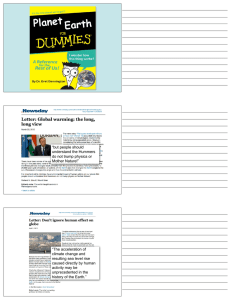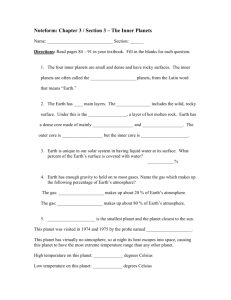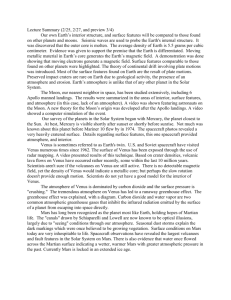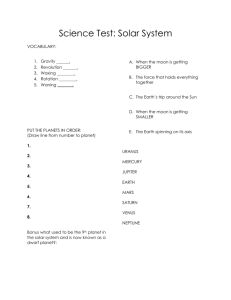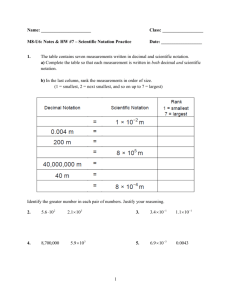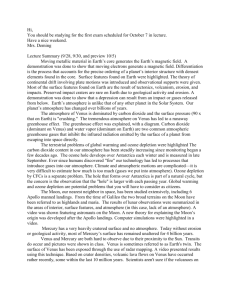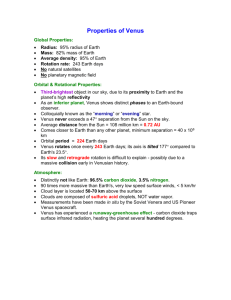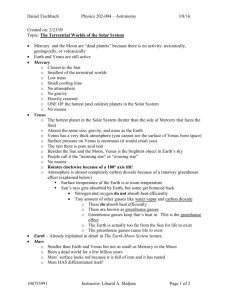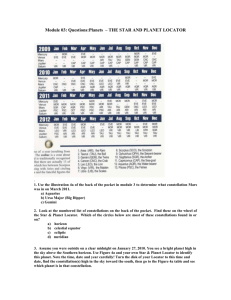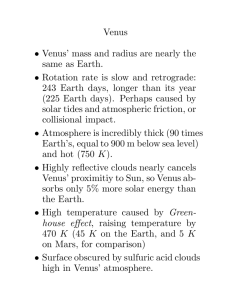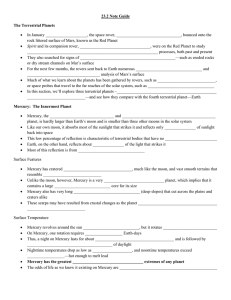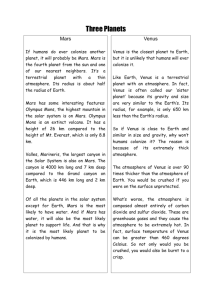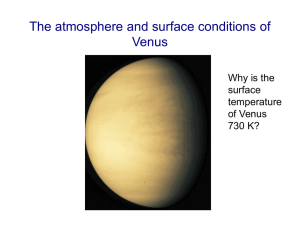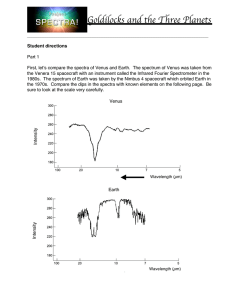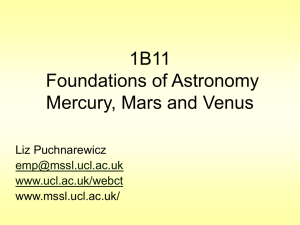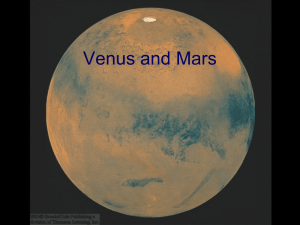Comparing Venus, Earth, and Mar
advertisement
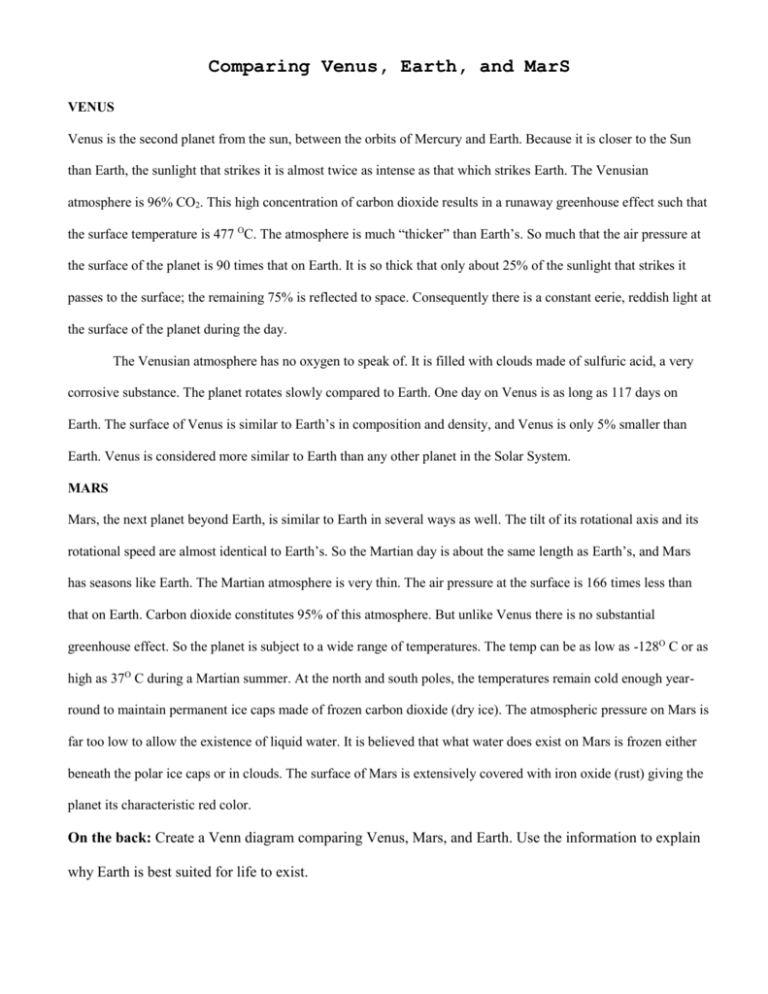
Comparing Venus, Earth, and MarS VENUS Venus is the second planet from the sun, between the orbits of Mercury and Earth. Because it is closer to the Sun than Earth, the sunlight that strikes it is almost twice as intense as that which strikes Earth. The Venusian atmosphere is 96% CO2. This high concentration of carbon dioxide results in a runaway greenhouse effect such that the surface temperature is 477 OC. The atmosphere is much “thicker” than Earth’s. So much that the air pressure at the surface of the planet is 90 times that on Earth. It is so thick that only about 25% of the sunlight that strikes it passes to the surface; the remaining 75% is reflected to space. Consequently there is a constant eerie, reddish light at the surface of the planet during the day. The Venusian atmosphere has no oxygen to speak of. It is filled with clouds made of sulfuric acid, a very corrosive substance. The planet rotates slowly compared to Earth. One day on Venus is as long as 117 days on Earth. The surface of Venus is similar to Earth’s in composition and density, and Venus is only 5% smaller than Earth. Venus is considered more similar to Earth than any other planet in the Solar System. MARS Mars, the next planet beyond Earth, is similar to Earth in several ways as well. The tilt of its rotational axis and its rotational speed are almost identical to Earth’s. So the Martian day is about the same length as Earth’s, and Mars has seasons like Earth. The Martian atmosphere is very thin. The air pressure at the surface is 166 times less than that on Earth. Carbon dioxide constitutes 95% of this atmosphere. But unlike Venus there is no substantial greenhouse effect. So the planet is subject to a wide range of temperatures. The temp can be as low as -128O C or as high as 37O C during a Martian summer. At the north and south poles, the temperatures remain cold enough yearround to maintain permanent ice caps made of frozen carbon dioxide (dry ice). The atmospheric pressure on Mars is far too low to allow the existence of liquid water. It is believed that what water does exist on Mars is frozen either beneath the polar ice caps or in clouds. The surface of Mars is extensively covered with iron oxide (rust) giving the planet its characteristic red color. On the back: Create a Venn diagram comparing Venus, Mars, and Earth. Use the information to explain why Earth is best suited for life to exist.




